A seasonal produce guide for the month of November, with tips on how to choose, store and prepare each ingredient! Plus, multiple recipes included for all 8 produce items!
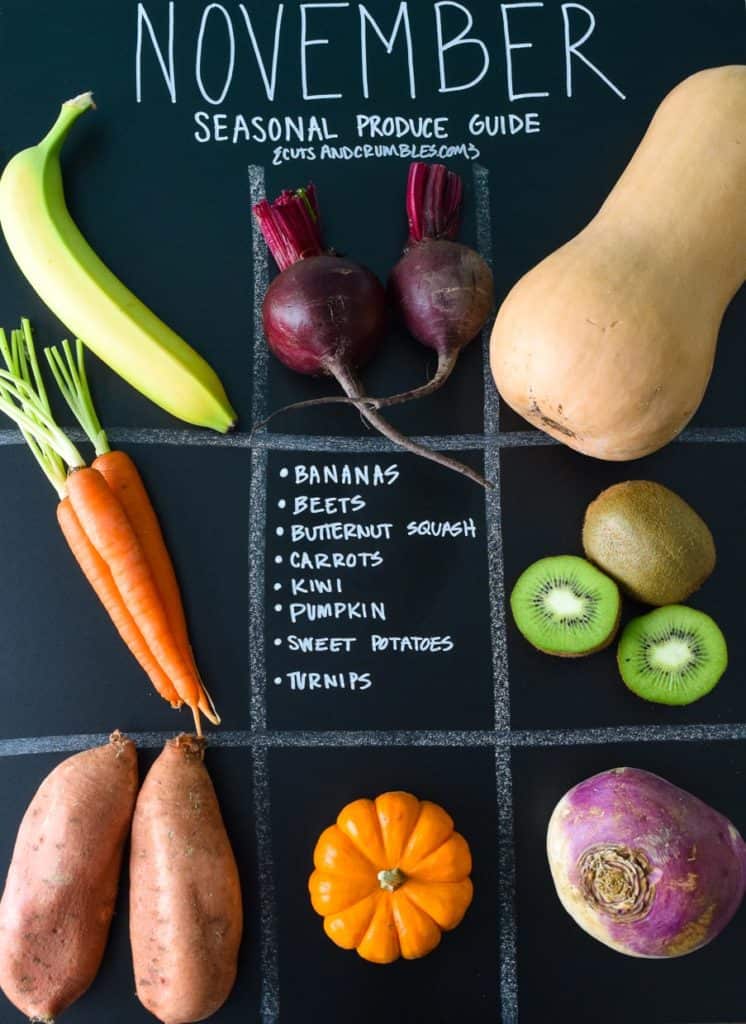
Welcome to the official month of food! Thanksgiving is coming which means we all get to carb load soon, so before we do, we should probably get in at least a few servings of fruits and veggies, right? November is mostly a time for root vegetables but there's still a few surprising bright and fresh fruits that can be enjoyed this month, too!
These monthly seasonal produce guides are designed to help you determine exactly what foods are currently in season, how to choose them and store them, as well as give you some great recipe ideas from fellow food bloggers that incorporate these seasonal finds! There's no need to wait until summer to load up on fresh fruits and veggies, you can totally enjoy them right now!
Eating seasonally will help you save money while increasing the amount of flavor and nutrients you are obtaining from your food. So let's dig into our November Seasonal Produce Guide!
Bananas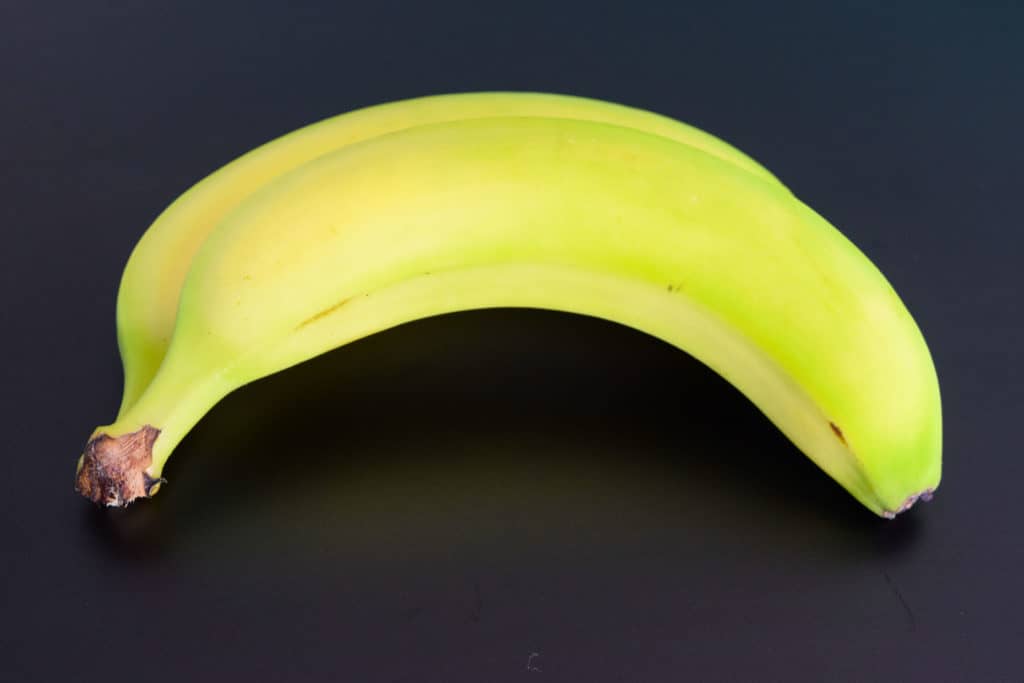
You might be surprised to see this on November's guide but bananas are available year round, which is perfect since they're one of my favorite fruits! (I appreciate any food that comes with its own carrying case.) They're great for a quick snack or for baking into a warm banana bread for chilly mornings this time of year!
- How to choose them:
- Choose bananas that are vibrant yellow in color with a little green on the ends.
- Choose bananas that are firm, with stems and peels that are intact.
- Choose based on the level of ripeness you desire. Green bananas will require a few days to ripen. Yellow bananas are ready to eat or should be eaten within the next day or two.
- Avoid bananas with any brown spots or bruises. A little brown speckling is okay, and is an indicator of ripeness and sweetness.
- How to store them:
- Store bananas at room temperature, out of direct sunlight, and ideally hanging on a banana tree to prevent bruising. If you don't have a banana tree, store in a bowl on your countertop.
- Do not detach the bananas from the bunch before storing. This will hasten the ripening process.
- Wrap the stems with plastic wrap. This will slow down the release of ethylene gas which will slow down the ripening process.
- Store next to unripened fruit. The bananas will help ripen the fruit and the unripened fruit will slow down the ripening process of the bananas.
- How to prepare them:
Beets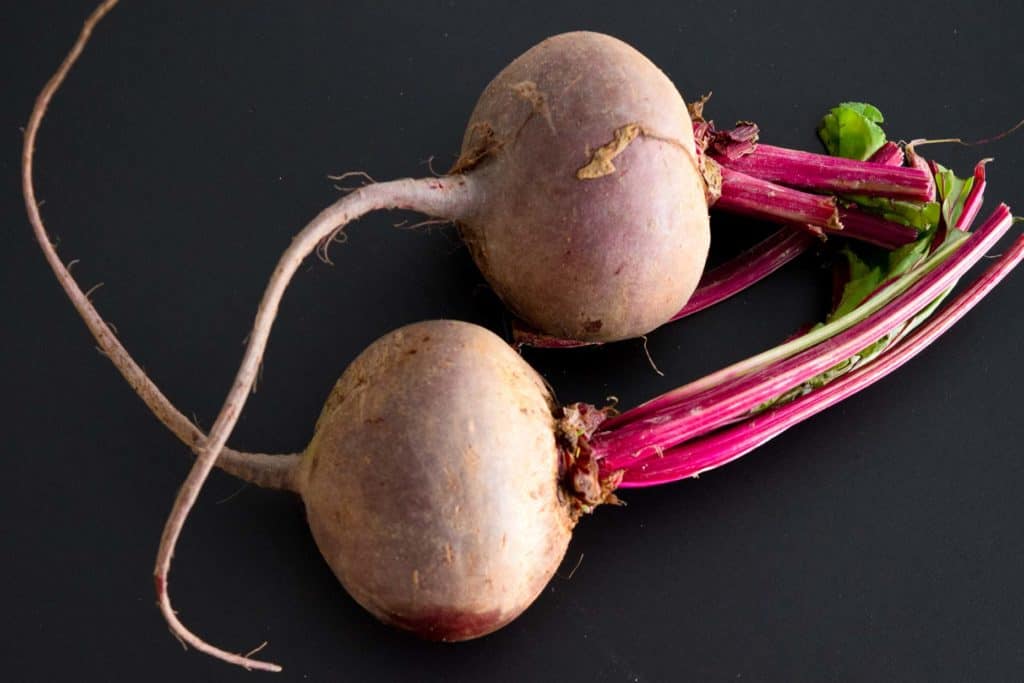
Beets are back! I still don't love them any more than the last time we talked about them, but Andrew is trying his best to convert me. I don't hate them, I'd just prefer to have roasted brussels sprouts or carrots! I'll agree that they excel in a properly made beet salad with goat cheese, but I think that's mainly because I like goat cheese...
- How to choose them:
- Choose beets that are round, smooth, hard and free of bruising, cuts, soft or moist spots, or flabby skin. The taproot should be slender.
- The leaves should be small, crisp and dark green. They wilt quickly so they're a good indicator of the freshness of the beets. If they are wilted, yellowed or rotten, you shouldn't purchase it. If the leaves have been removed, make sure at least 1 inch of stem remains.
- A beet should have an intact root, otherwise, it may spoil more quickly.
- They should be firm to the touch but not rock hard, otherwise, they will be hard to cook. Soft spots indicate that it may be rotten inside.
- The smaller the beet is, the more tender it will be.
- How to store them:
- Cut off the greens before storing to reduce moisture loss, but leave on at least an inch of stem (however, baby beets should be stored with the greens on).
- Beets can be stored in the refrigerator in a sealed bag for 10 days to 3 weeks and should not be washed prior to storing. You can also store them in a cool, dark place, such as a basement shelf. Check them regularly for odor or any green or black spots, and dispose of if you notice any.
- If you're going to eat the leaves, store them in a bag in your crisper drawer and eat them within 1-2 days (can be eaten raw or cooked).
- How to prepare them:
Butternut Squash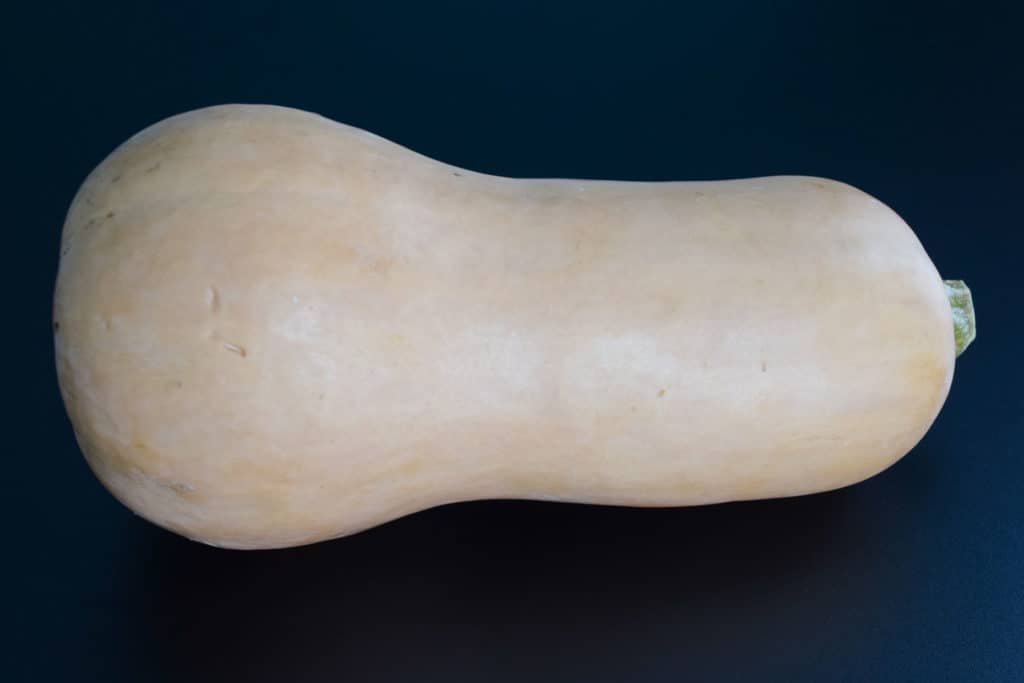
We talked about acorn squash in our October Seasonal Produce Guide, so now it's time to let butternut squash be the center of attention!
If you've never cooked with butternut squash or you've had a rough experience with trying to cut it, check out my guide on How to Cut a Butternut Squash and try exploring some new recipes like this Secret Ingredient Roasted Broccoli Rotini! (Spoiler alert, the secret ingredient is butternut squash. Bet you never coulda guessed! 🙂 )
- How to choose it:
- Choose a butternut squash that is a uniform dark beige color and avoid any with brown patches or green streaks. The skin should be a matte finish, avoid any that are waxy or shiny.
- Avoid squash with any puncture marks, deep cuts, or bruises. A few surface scratches are fine.
- Choose a squash that is hard and heavy for its size.
- Check for a firm, deep brown, in tact stem. If it is missing or soft the squash may be past its prime.
- How to store it:
- Store in a cool, dark place such as your pantry or basement. Store on a shelf to avoid excess moisture from floors that can result in rotting. When stored properly, a butternut squash can last for 1-3 months.
- Store cut squash tightly sealed in plastic wrap in the refrigerator for up to 5 days. Cooked squash will also last about 5 days in the refrigerator.
- Do not store near apples, pears, bananas or other ripening fruits, as the ethylene gas they emit will cause the squash to go bad faster.
- Squash can be frozen for up to 8 months if stored properly. Place cut squash chunks (raw or cooked) on a baking sheet lined with parchment paper in a single layer then freeze for 1 hour until the pieces are firm to the touch. Place chunks in a freezer bag or freezable container with about ½ inch left on top for possible expansion and place in freezer.
- How to prepare it:
Carrots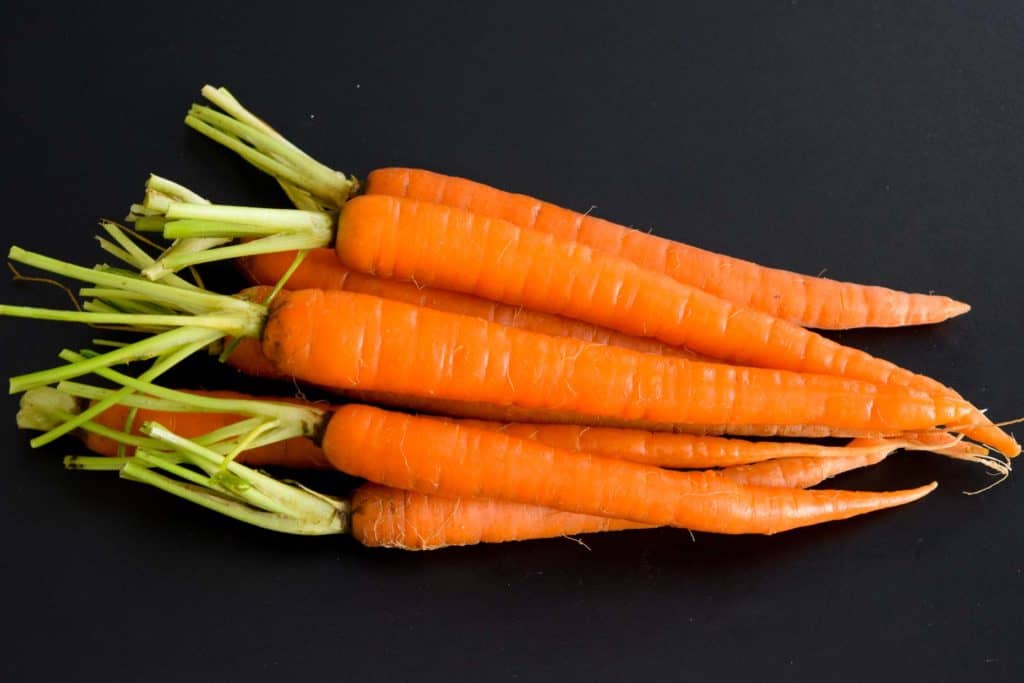
Carrots are the OG of root vegetables. Like if there was a mafia of root vegetables carrots would definitely be the godfather. That's kind of all that needs to be said about them here, I think...
- How to choose them:
- Choose carrots that are firm and bright orange. Coloration should be uniform throughout the carrot and tops should be crisp and bright green.
- The skin should be smooth. Avoid choosing carrots that are pale, cracked, soft, shriveled or wilted.
- Choose medium sized carrots that taper at the ends, as the larger ones will be tough.
- How to store them:
- Cut the greens off to prevent moisture loss.
- You want to keep the carrots dry, so store in an open bag in your crisper drawer.
- Store away from fruit (some fruit produces ethylene gas which will age the carrots faster.)
- Carrots will last for a few weeks in the refrigerator.
- How to preparethem:
Kiwis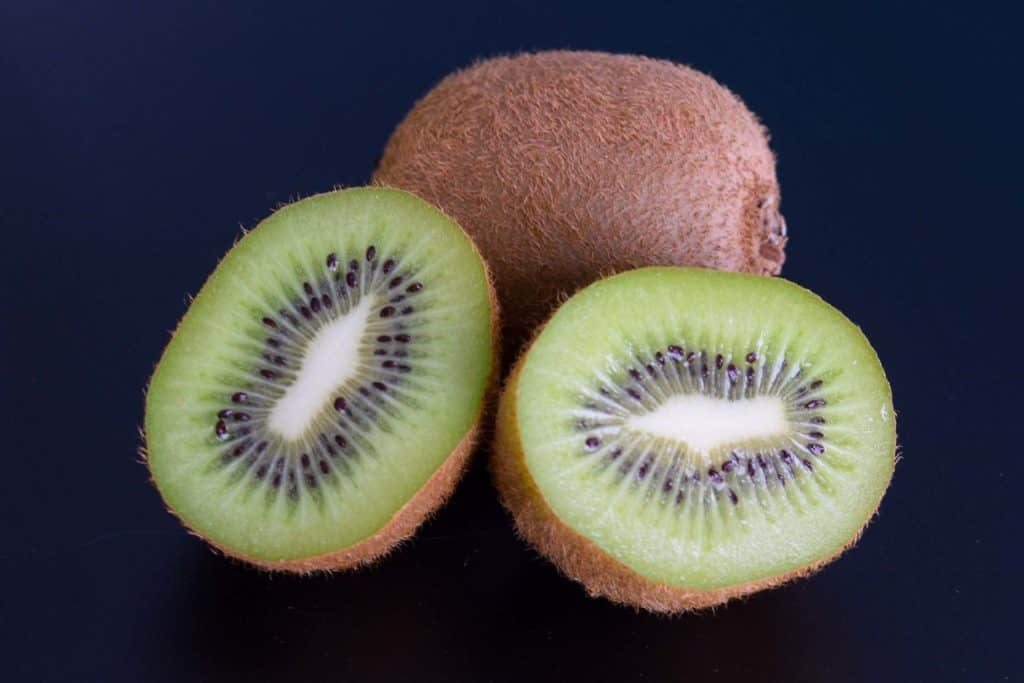
This is surprising, isn't it? Or at least it was to me! I didn't realize kiwis were in season in November, but in my research, kiwis were a recurring fruit for this month! I'm glad they're part of the party to lighten up all our root veggies! 🙂
- How to choose them:
- Check for kiwis that have a smooth, brown, fuzzy skin. Avoid any that have dark spots, bruises, mold, wrinkles or look shriveled. Ripe kiwis will have fuzzy skin while unripe kiwis will not yet be fuzzy.
- A perfectly ripe kiwi should give slightly when pressed with your thumb. If it doesn't give at all then it is not yet ripe and if it feels mushy then it is overripe.
- Smell the kiwi. Ripe kiwis will give off a fragrant, citrus, smell.
- How to store them:
- Store any unripened kiwis in a paper bag with an apple or a banana to help speed up the ripening process. Check in 3-5 days to see if they are ripe. (These fruits release ethylene gas which will speed up the process).
- Store ripe kiwis in the refrigerator until ready to eat.
- How to prepare them:
Sweet Potatoes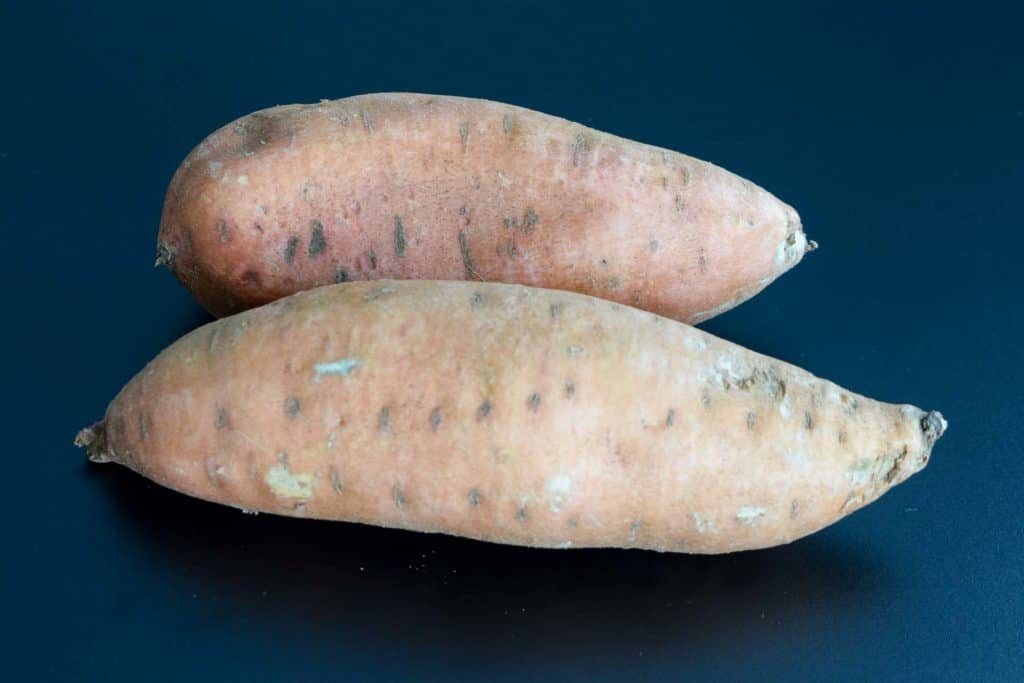
NATURALLY sweet potatoes are in season this month! What's a Thanksgiving meal without sweet potatoes?! (Although at my house we replace sweet potatoes with just extra mashed potatoes because that's how we roll.)
- How to choose them:
- Choose small or medium potatoes, as these will be sweeter and creamier.
- Choose potatoes with firm, even, smooth skin with a dark color. Avoid any with wrinkles, blemishes or bruises.
- How to store them:
- Do not refrigerate whole sweet potatoes, this will cause faster deterioration, a hard center and poor flavor.
- Store whole sweet potatoes in your pantry or basement for up to 1-2 weeks. Due to the high sugar content, they won't last much longer than this and you can't cut away the decayed portion like you can in regular potatoes because once it begins to rot it will affect the flavor of the entire potato.
- Cooked sweet potatoes can be stored in an airtight container in the refrigerator for up to 4-5 days. Sprinkle with lemon juice to prevent discoloration.
- How to prepare them:
Pumpkin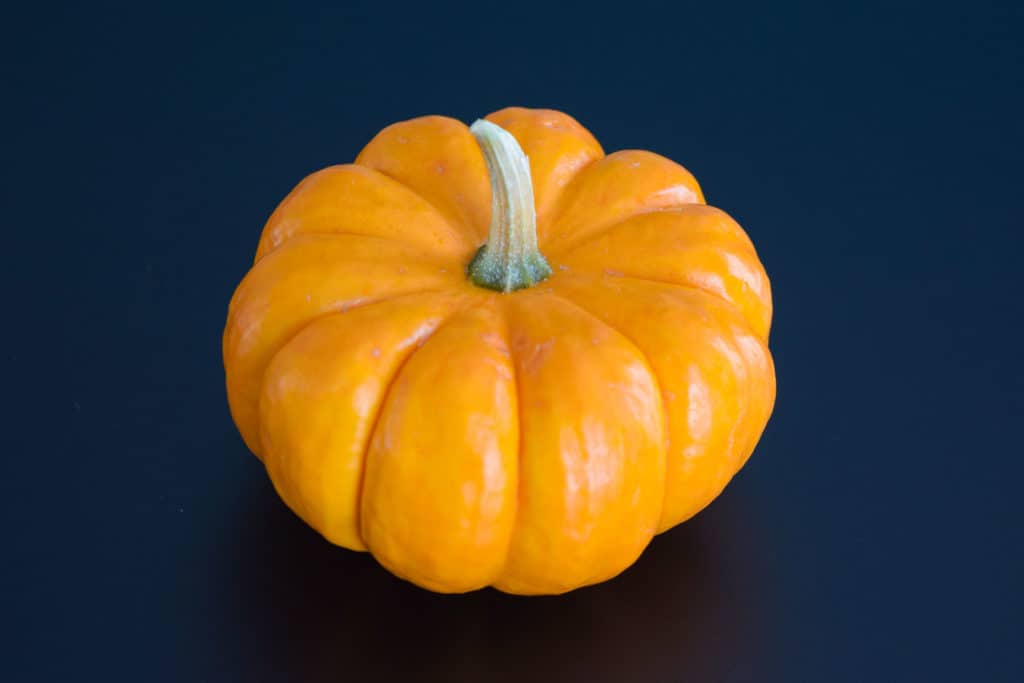
We talked about pumpkins in October, of course, but they're still in season this month so it's worth bringing them up again! This month it is time to whip our leftover Halloween decor into pumpkin pies for our Thanksgiving dinner!
- How to choose them:
- Choose pumpkins with smooth, unblemished, even colored skin. Pumpkins will get duller as they age but also get sweeter.
- Avoid any pumpkins with bruised skin or soft spots. Be sure to check the bottom for any signs of rot.
- Choose pumpkins with a brown or dark green dry stem and avoid carrying it by the stem.
- How to store them:
- Store in a cool, dark place for a few weeks until ready to use. Once cut, wrap tightly and refrigerate for up to 5 days.
- How to prepare them:
Turnips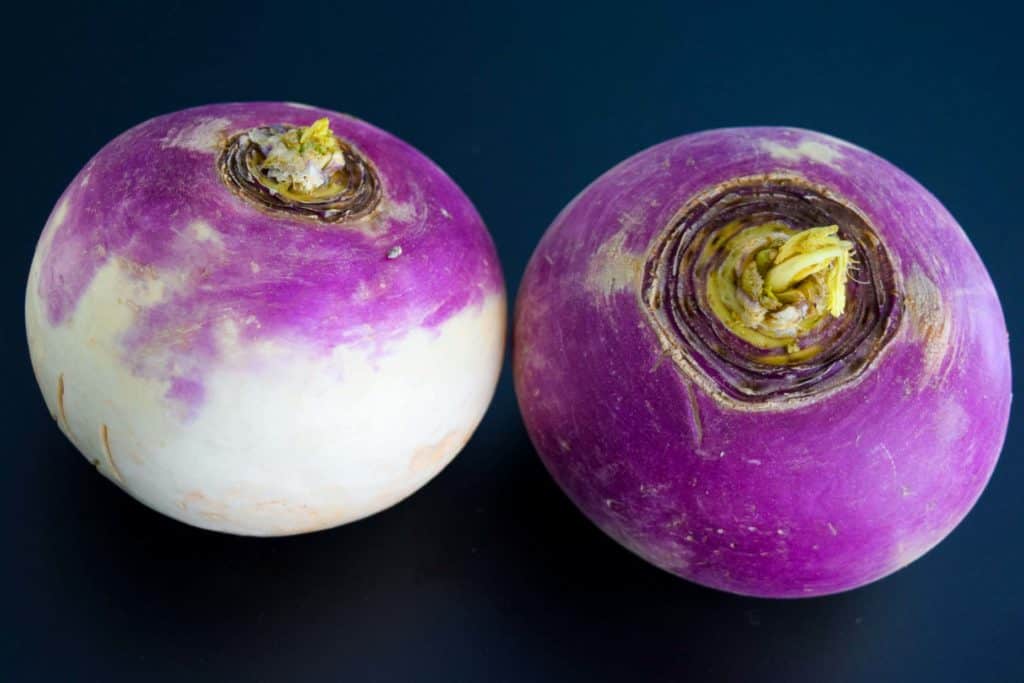
Look how pretty these turnips are! They just don't get the credit they deserve! When cooked properly, turnips are actually quite delicious and a nice change up from some of the other fall/winter root vegetables (looking at you, beets...)
- How to choose them:
- Choose turnips that are heavy for their size (are you guys sensing a theme here? Buy all the heavy produce!)
- Choose brightly colored turnips with creamy bulbs, and a violet ring around the top. If the leaves are still attached, make sure they are green, crisp and not wilted.
- Avoid any turnips with nicks, cuts, or soft spots.
- Choose small turnips, as these will be the youngest and sweetest with the best texture.
- How to store them:
- Store tightly wrapped in the refrigerator for up to 2-3 weeks.
- If the leaves are still attached, remove before storing so they do not draw moisture out of the turnips. Turnip greens can be eaten in salads (young greens), or prepared like cooked spinach (older greens).
- If storing the greens, rinse and store in a plastic bag for 4-5 days.
- How to prepare them:
That's it!! I hope you enjoyed this month's produce guide! Plan ahead by checking out next month's guide!

Leave a Reply